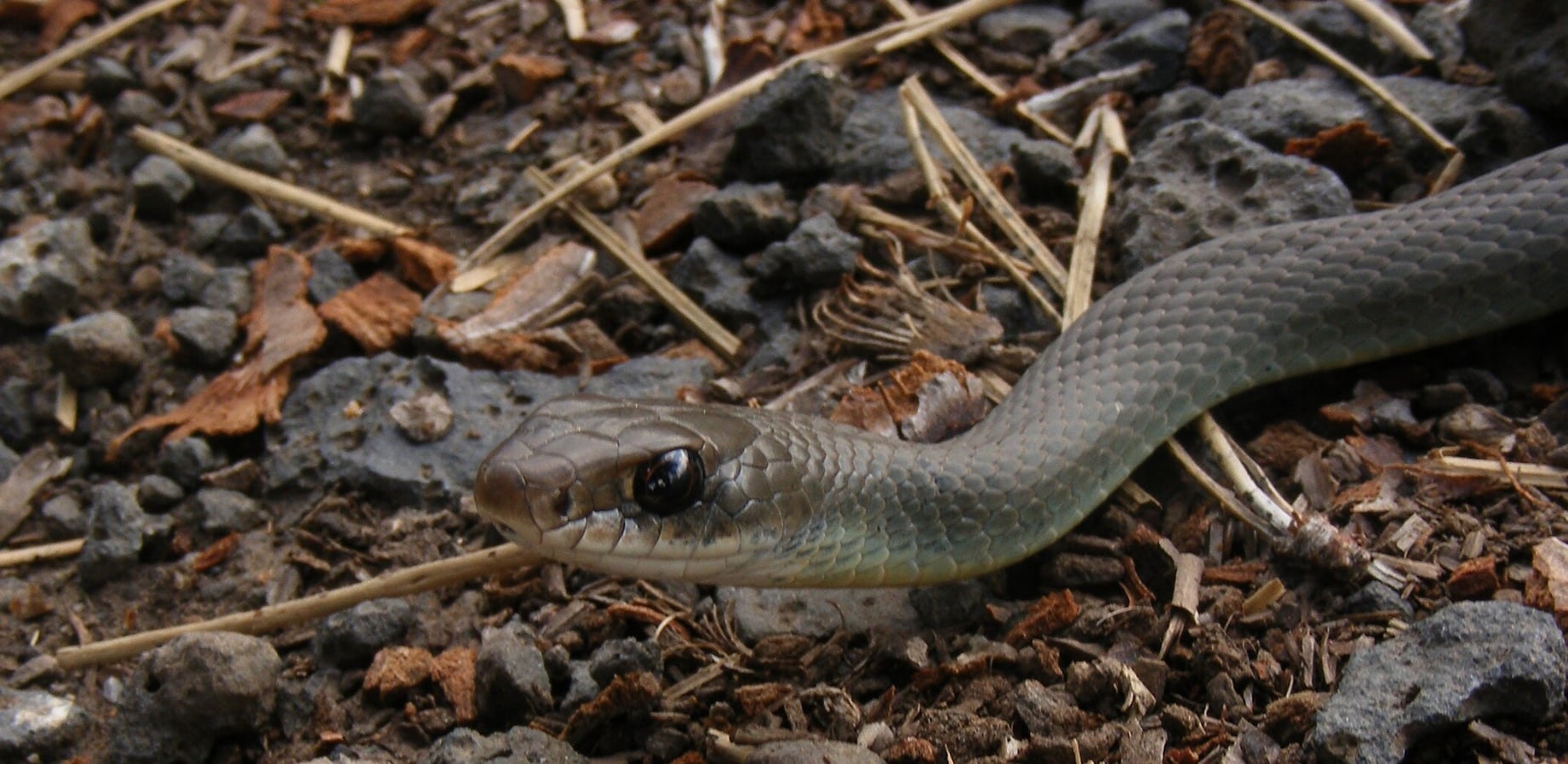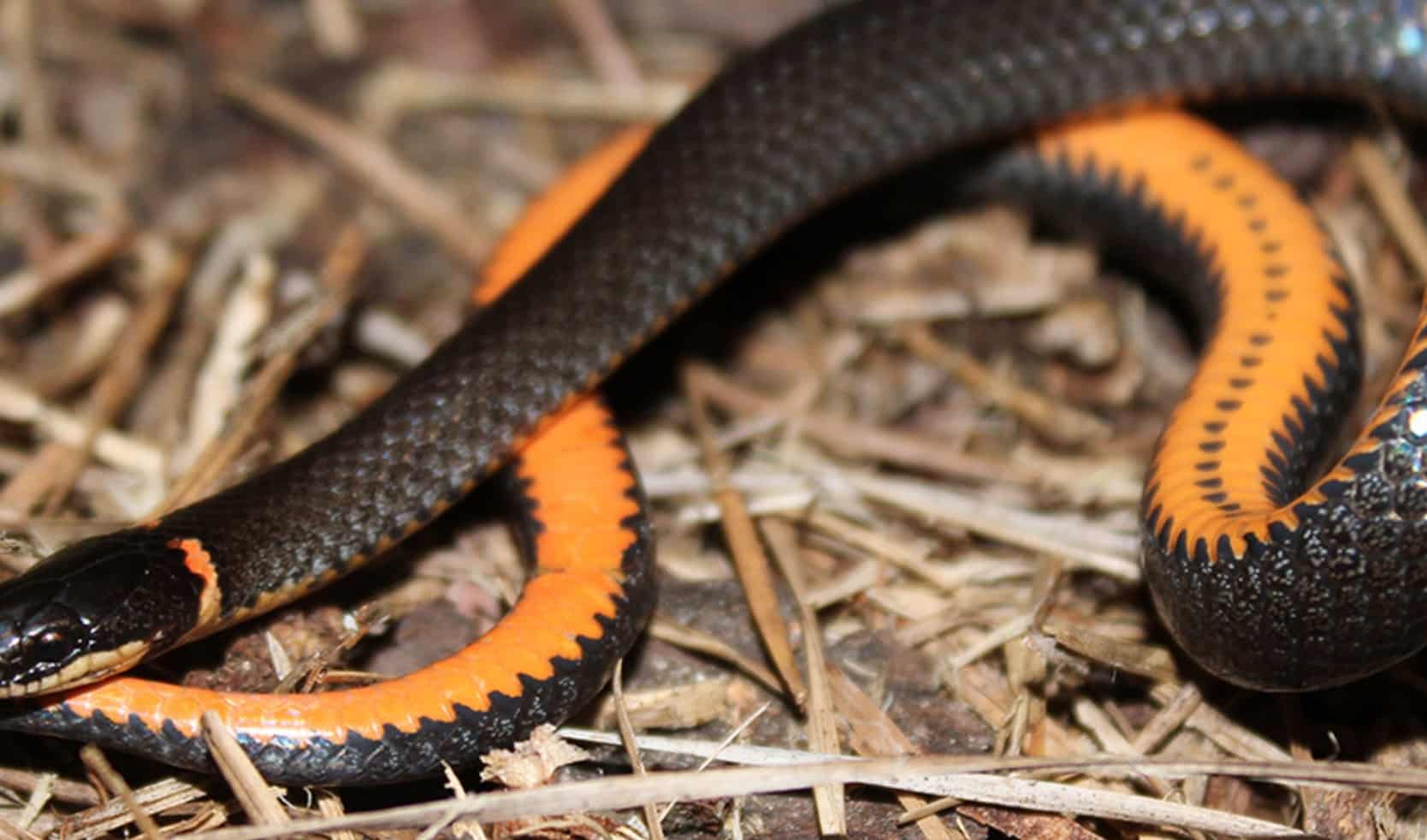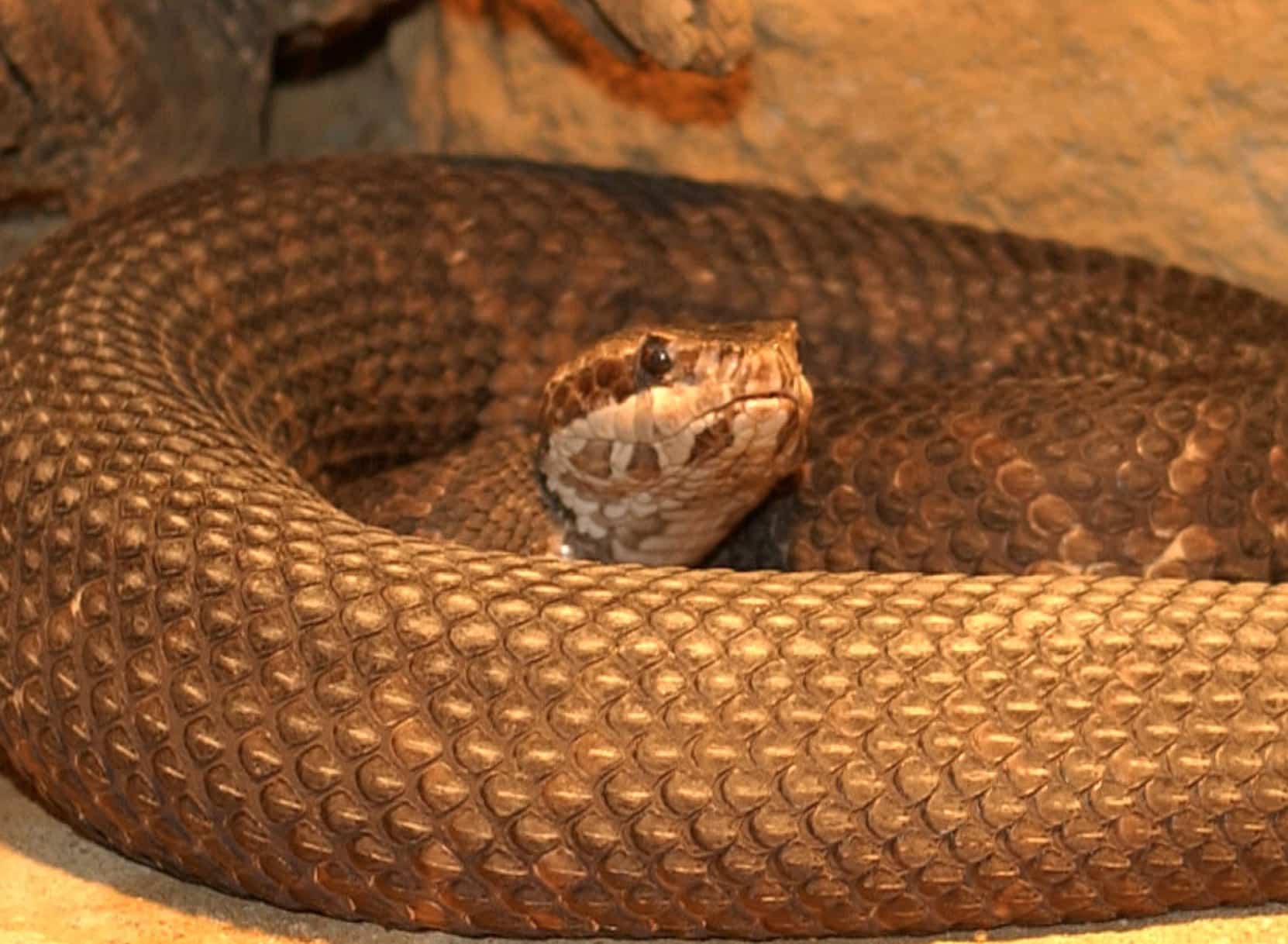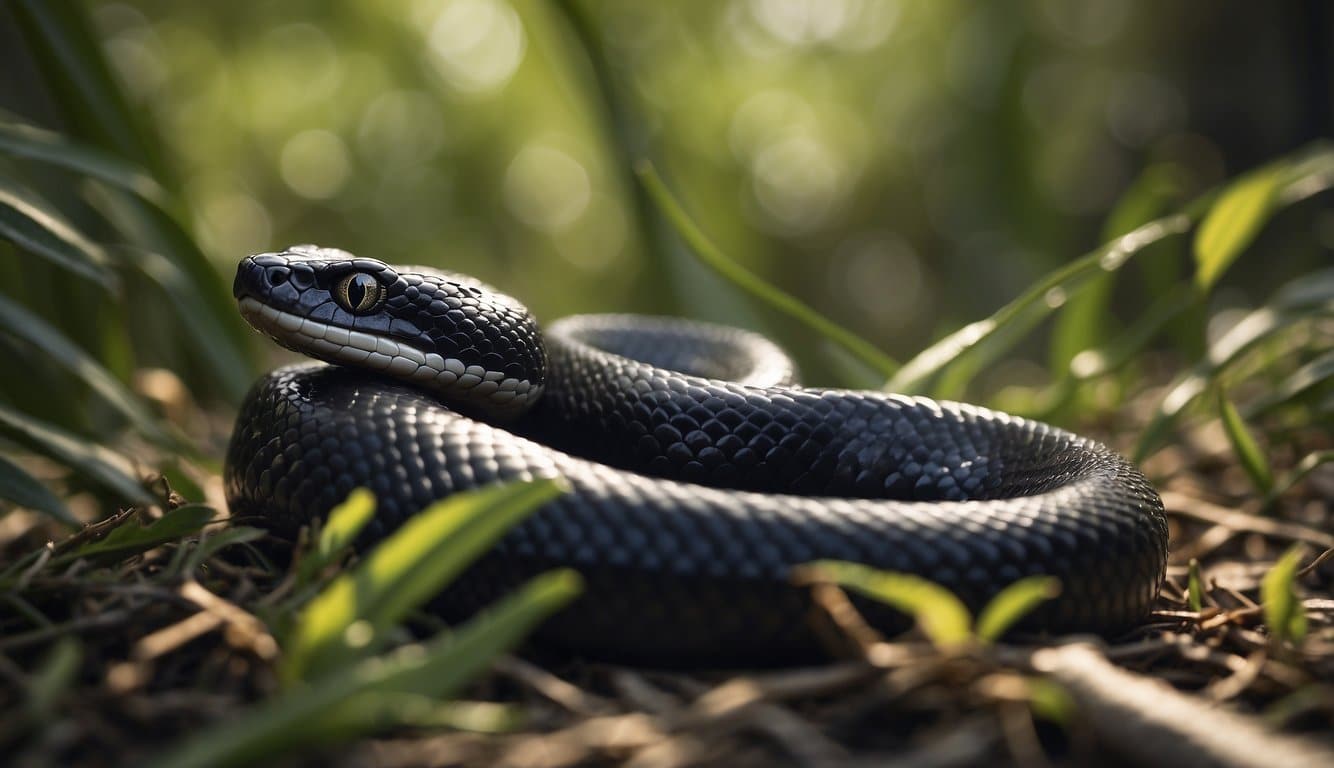In Florida, several snake species are commonly referred to as “black snakes,” and it’s important to differentiate between them to address concerns about venom. Here’s a table providing information on whether these snakes are poisonous:
| Question | Are Black Snakes in Florida Poisonous? |
|---|---|
| Answer | Generally No |
| More Info | The term “black snake” in Florida often refers to several species: |
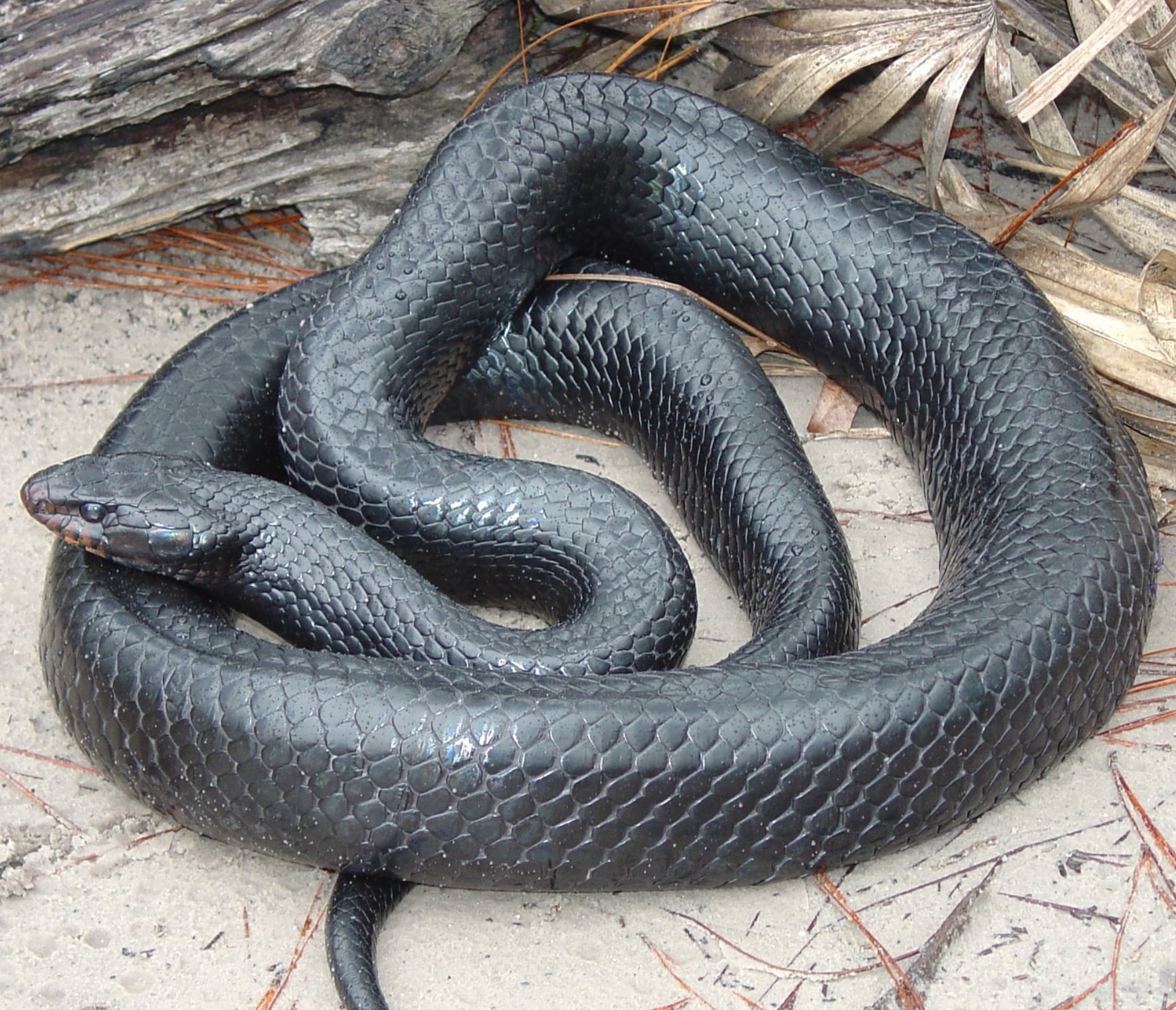
- Southern Black Racer (Coluber constrictor priapus): Very common, completely non-venomous. They are fast-moving, active during the day, and generally flee from humans.
- Eastern Indigo Snake (Drymarchon couperi): Another non-venomous species, recognized by their shiny, iridescent blue-black coloring. They are protected under the Endangered Species Act.
- Florida Black Swampsnake (Seminatrix pygaea): Non-venomous, small, and aquatic, typically found near water.
- Black Pine Snake (Pituophis melanoleucus lodingi): Also non-venomous, found in sandy pine flatwoods.
These black snakes are non-venomous and pose no venomous threat to humans. However, there are venomous snakes in Florida, like the Eastern Diamondback Rattlesnake, but these are not typically referred to as black snakes.
It’s important to remember that “non-venomous” does not mean a snake won’t bite if provoked or threatened. Their bites can cause injury or infection, so it’s best to observe all snakes from a safe distance.
What Black Snakes Live in FL
In Florida, distinguishing between non-venomous and possibly venomous black snakes is crucial for your safety. Here’s a structured guide to help you identify black snakes:
- Black Racer (Coluber constrictor priapus)
- Appearance: Sleek and slender with a shiny black coat and a white chin.
- Length: Typically 20 to 56 inches.
- Venomous: No.
- Habitats: Various environments, including urban areas.
- Eastern Indigo Snake (Drymarchon couperi)
- Appearance: Large and robust; iridescent black scales.
- Length: Up to 8 feet, one of the longest native North American snakes.
- Venomous: No.
- Habitats: Sandy areas, dry glades.
- Southern Ringneck Snake (Diadophis punctatus punctatus)
- Appearance: Small, slender; black with a yellow ring around neck and yellow underbelly.
- Length: Usually 10 to 15 inches.
- Venomous: No, but mildly toxic to their prey.
- Habitats: Forests, wetlands.
- (Agkistrodon piscivorus conanti)
- Appearance: Heavy-bodied with a blocky head; young have band patterns which darken with age.
- Length: Typically 30 to 48 inches.
- Venomous: Yes, exercise caution.
- Habitats: Frequents wet areas like marshes and streams.
Remember, while these are common examples of black snakes found in Florida, this is not an exhaustive list.
Always maintain a safe distance from any snake, as identification can sometimes be challenging. If you need assistance with identification, consider consulting online resources such as the Florida Museum’s snake identification guide.
It’s advised to never handle a wild snake unless you are absolutely certain of its species and that it’s non-venomous.
Venomous Black Snakes
In Florida, several black snakes are harmless, but it’s crucial for you to recognize the venomous ones for your safety. Here are specifics on three black snakes in Florida that you must be aware of: the Eastern Coral Snake, Southern Black Racer, and Pygmy Rattlesnake.
Eastern Coral Snake
- Identification: Recognize the Eastern Coral Snake by the distinctive pattern of red, yellow, and black bands.
- Venom: Highly venomous with neurotoxic venom that can cause critical symptoms.
- Note: Contrary to a popular rhyme, not all similarly patterned snakes are venomous, but caution is advised. For more information, visit Identifying Florida’s venomous snakes.
Southern Black Racer
- Identification: While not venomous, Southern Black Racers are often mistaken for venomous snakes due to their coloration.
- Behavior: They are swift and may flee when approached, but knowing their non-venomous nature is essential.
- To learn more about their habitat and behavior, you can check details on Black Snakes in Florida.
Pygmy Rattlesnake
- Identification: This small venomous snake has a dark, dusky coloration that can appear black.
- Venom: Its bite can deliver potent venom but is less dangerous compared to larger rattlesnakes.
- Habitat: Commonly found in forests and marshes across Florida, it’s important to stay alert in these areas. More information is available on venomous snakes in Florida.
Safety and Precautionary Measures
In Florida, encountering a snake doesn’t have to be a nerve-wracking experience if you’re prepared with the right knowledge. Here’s what you need to do to stay safe:
Identification:
- Always observe from a distance.
- Learn to recognize common non-venomous snakes like the black racer, characterized by its shiny black scales and white chin.
In the Wild:
- Stay on designated paths.
- Avoid tall grasses and piles of leaves or rocks where snakes may hide.
- Wear boots and long pants for protection.
If You Encounter a Snake:
- Do not attempt to handle or harm the snake.
- Back away slowly and give it space.
Preventative Measures At Home:
- Keep your yard tidy by removing debris.
- Seal crevices in the foundation of your house where snakes could enter.
- Consider a professional guide for more detailed strategies.
Emergency Response:
- In case of a bite, stay calm and seek immediate medical attention.
- Do not apply a tourniquet or try to suck out the venom.
Frequently Asked Questions
When exploring Florida’s diverse wildlife, it’s essential to be aware of the types of snakes you might encounter, especially when it comes to identifying which ones are venomous. Here are some of the most pressing questions asked about black snakes in Florida, providing you with key information for your safety and peace of mind.
What types of black snakes are found in Florida?
- The black racer is one of the most common black snakes you’ll encounter in Florida, thriving across various habitats.
- Florida is also home to the Eastern indigo snake and the Southern black racer, among other species.
How can you identify if a snake in Florida is venomous?
- Observe the physical characteristics: venomous snakes like pit vipers in Florida have a triangular head, elliptical pupils, and heat-sensing pits.
- Refer to the color pattern: remember the rhyme ‘red touch yellow, kill a fellow’ to spot the venomous Eastern coral snake.
- The black snout of the Eastern coral snake is an indicator of danger.
Can black racer snakes in Florida pose a danger to humans?
- Black racer snakes are non-venomous and generally not a threat.
- They may bite if threatened but their bite is not poisonous to humans as highlighted by pet wellness experts.
What should one do if bitten by a black snake in Florida?
- Remain calm and try to remember the snake’s appearance.
- Wash the bite with soap and water, then seek immediate medical attention even if the snake is believed to be non-venomous.
Are there any venomous black snakes native to Florida?
- While most black snakes in Florida are non-venomous, the Florida cottonmouth, also known as the water moccasin, is a venomous black snake native to the region.
How does one differentiate between a black racer and a black rat snake in Florida?
- Black racers are typically slender with shiny scales and round pupils.
- Meanwhile, black rat snakes are heavier and have a more pronounced jawline.
- Black rat snakes are climbers and can often be found in trees.
- This contrasts with the ground-dwelling nature of the black racer.
